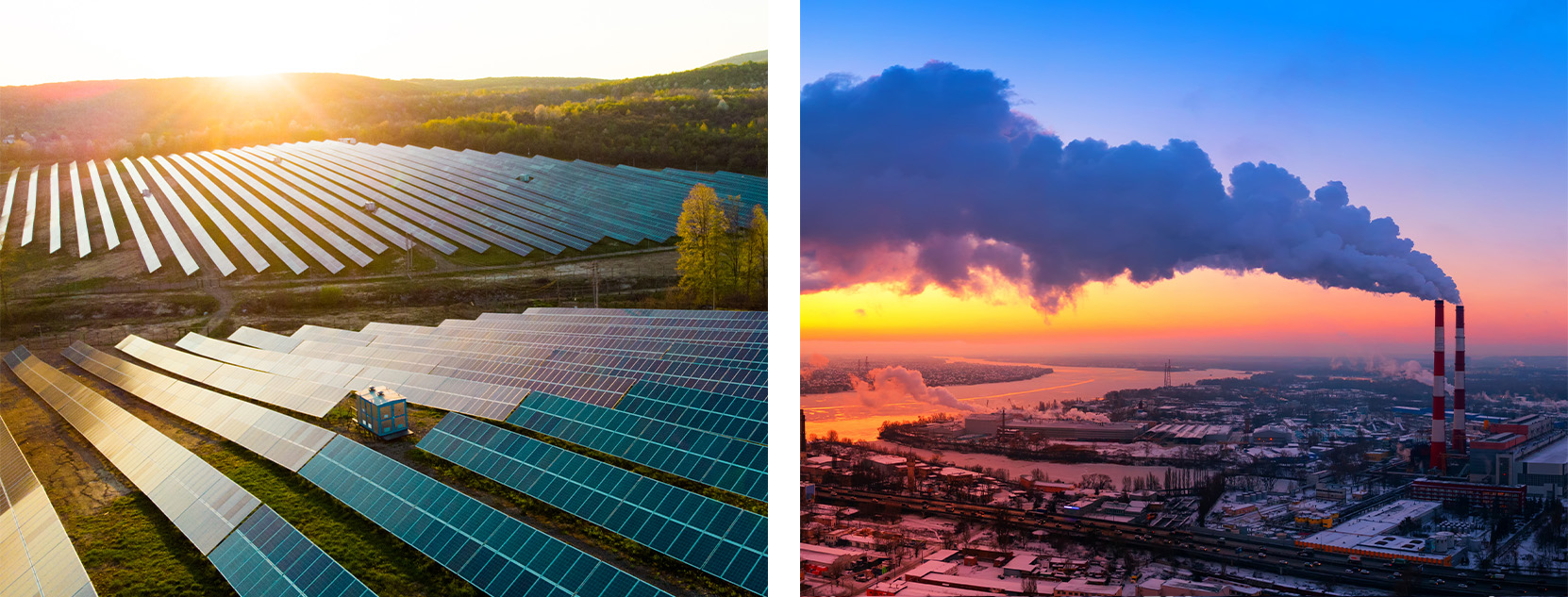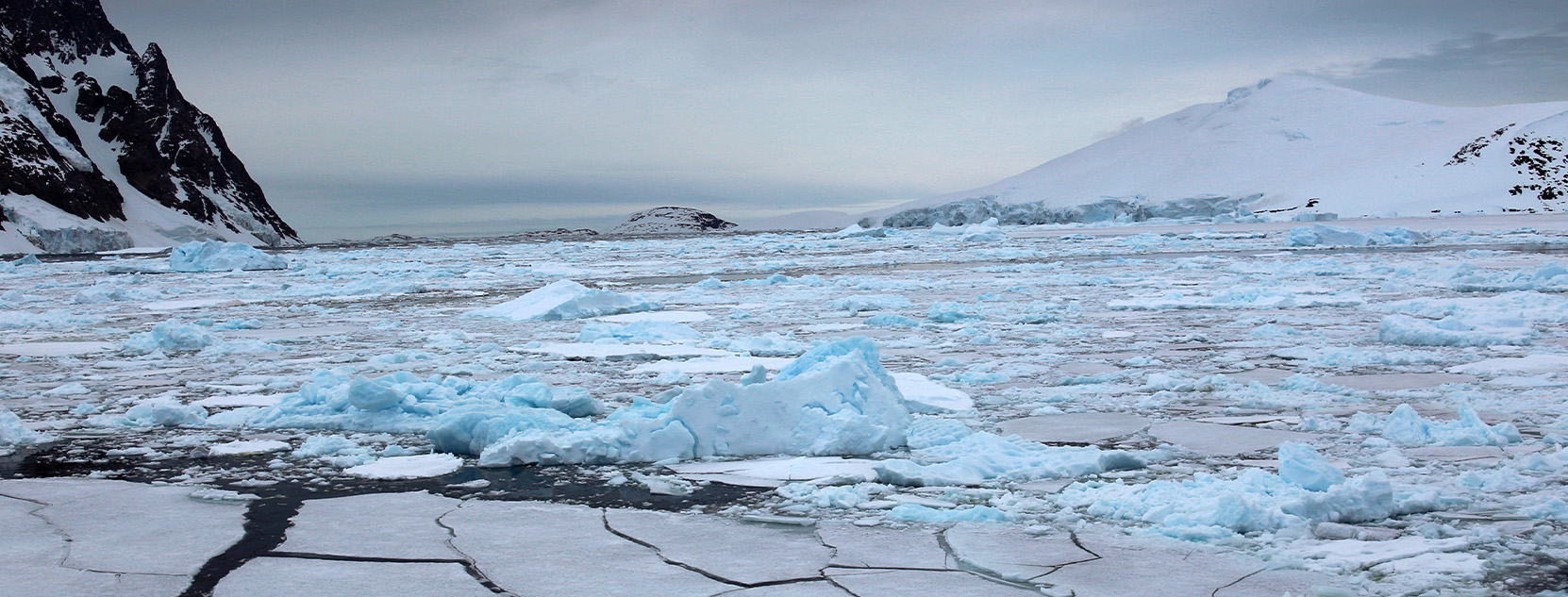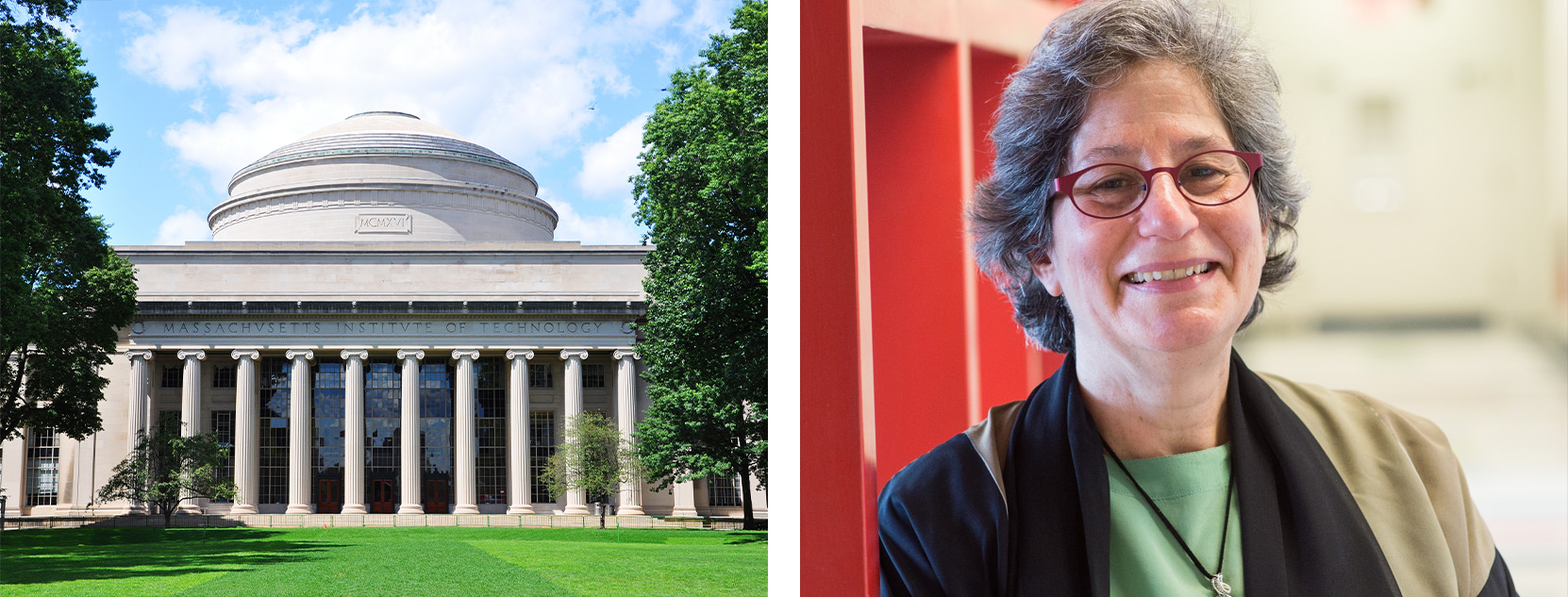
Prof. John Fernández
Director of the MIT Environmental Solutions Initiative
Climate Truth and Consequences

John E. Fernández, Professor and Director Environmental Solutions Initiative MIT
7 June 2023
This inaugural article marks the beginning of a series on the topic of climate change and other issues of the environment and planet.
Why climate change?
Winthrop Center was partly conceived as a step toward a new kind of built environment – one in which the climate needs of our era are met. While the building is now in place, and the energy-efficient and low-carbon systems of the commercial office space and various features of the residences are completed, the community of people who live and work in the building are an essential element of the climate strategy. Bringing you the latest information about climate change and other
environmental challenges while suggesting ways in which you can contribute to a more sustainable today and tomorrow is part of the positive role of Winthrop Center in Boston.
In this first article, my goal is to offer a few important points about what we know of the current state about climate change. This article is the first in a series about
the climate truth – what we know today and what we are continuing to learn. It is also about the consequences of this knowledge – understanding better what the near and far future hold. It is possible that this current understanding is familiar to you – there is no lack of information about the climate out there – but then that’s the challenge.
There is so much good (and bad) information available to anyone who can google, it is difficult to keep up to date on the science of Earth’s systems and especially
difficult to know what is most important to pay attention to and keep your eye on. In this article, I highlight just a few things that are important to know about climate change. In future articles, I will cover many other aspects of this global challenge.

Today, we live in an immensely self-aware era. While you could interpret that statement in a variety of ways, I am referring to the fact that we know more about the Earth and its various systems – the hydrosphere, atmosphere, cryosphere, lithosphere, and biosphere – than ever before and more than any humans ever have. This is a triumph of science and one of the extreme ironies of the politicization of climate change. The science of the climate is exquisite in its resolution, its scope, and its proven ability to predict even the most complex of physical phenomena. Despite what some might have you believe, climate change projections and the models they are based on – even those developed by corporate fossil fuel majors – have been devastatingly accurate in their prediction of the seriousness of the climate situation today.
That is, fundamentally, very good news. We know where we are headed better now than ever before. That brings me to the first major update on climate change. The best-case scenario AND the worst-case scenario are both now highly unlikely. Let’s start with the worst case.
Up until just a couple of years ago, the worst possible scenario included a massive increase in the amount of coal-fired power production worldwide. In fact, the scenario itself – referred to as Representative Concentration Pathway 8.5 – assumed a five-fold increase in coal-fired power production. The RCP8.5 scenario was used, along with other scenarios to model future climate change, and was at the upper limit of greenhouse gas emissions. RCP8.5 posed, arguably, an existential threat to humans and many, if not most other species on Earth. While it may not have led to a Permian-Triassic level extinction event, otherwise known as The Great Dying, it was a future of immeasurable suffering and destruction.
The very good news is that we now know that this scenario is highly unlikely with an almost zero probability of occurring. The reason for this knowledge is very simple: Burning coal for power has decreased dramatically in many parts of the world and power from renewable energy, solar, and wind, is now competitive in many regions.
On the other hand, the very best-case scenario – limiting warming to no more than 1.5 degrees Celsius above a pre-industrial level is also almost certainly not possible (Engels st al. 2023). Scientists have forecast we may stray above 1.5 degrees C sometime in the next several years temporarily, and then do so permanently by sometime around 2033. You may know that 1.5 degrees C was established as an important threshold by scientists concerned about the uncertainty of runaway effects, so-called tipping points (more on this below) at global temperatures above 1.5 degrees C. Because we have not yet begun to reduce our carbon dioxide emissions globally, keeping average surface temperatures below 1.5 degrees C is almost certainly not possible.
Taken together, the highly unlikely probability of both the best- and worst-case scenarios is a positive outcome in that it gives us a tighter range within which we know we are headed. It is always better to have more accurate projections when you are trying to plan. To know that we are not planning for maximum or minimum warming makes decision-making easier and more effective. It provides us with a clearer target. This leads to the next important thing to know about our current understanding of climate change.

The cost of renewable energy production continues to decrease rapidly. This is impressive given that several major renewable energy systems have come down in cost dramatically these past few decades. One of the best metrics used to compare the costs of vastly diverse energy systems is the Levelized Cost of Energy (LCOE). This measure allows a comparison of the full costs, including construction and operation, of any kind of energy system. LCOE of solar (both photovoltaic and solar concentrator farms), wind and other renewable systems are now competitive with all forms of fossil energy production and becoming more economical every year. This means that the market is moving toward renewable energy with a massive influx of investment dollars. Last year global investment in low carbon energy surpassed USD 1 trillion, matching investments in fossil energy for the first time and 90 percent of global electricity expansion in the next five years is expected from renewable production.
All of this is set against another cycle of accelerating climate consequences. Just the last several months have seen record temperatures across East Asia and India and a return of very hot days in the Pacific Northwest of the United States and Canada. An increasing number of people are experiencing heat that is not only extremely uncomfortable but potentially lethal for the very young and very old. Over the past ten years at least half of the global population has experienced record temperatures where they live (Hausfather 2023).
What worries scientists is the prospect that sustained and global increases in temperatures will trigger tipping points. A tipping point is the initiation of a large-scale nonlinear physical phenomenon that is driven by a self-reinforcing dynamic. In other words, it’s a runaway condition that we would not be able to control or reverse.
For example, the release of carbon from decomposing permafrost that has thawed for the first time in many thousands of years is accompanied by the release of naturally occurring methane which has been trapped for just as long under that permafrost. Both the released carbon and methane contribute to further warming, methane being a greenhouse gas many times more powerful than carbon dioxide.

Another tipping point is the accelerating melting of Arctic ice due to the increased heat absorption of the dark water of the sea. The white color of ice is an excellent reflector of heat, while the darker color of water absorbs a great deal more heat from sunlight. As more Arctic ice melts from climate change, the surface changes its albedo – the proportion of light reflected rather than absorbed – and the warmer the sea becomes leading to greater Arctic ice melt. We may have already triggered this tipping point as Greenland ice melt accelerates and someday soon, we may see a summer Arctic ocean without ice cover (Kim et al. 2023).
Tipping points are possibly the most concerning of all climate consequences because once they are initiated, there is little if anything that we humans can do about them. The very slight possibility of a very bad outcome is partly due to the possibility that tipping points will make up for the warming that we would have avoided from an increase in coal-fired power plants. At that point, we will be left with few options but to embark on an extreme and immediate reduction in greenhouse gas emissions and a massive deployment of machines capable of capturing carbon dioxide directly from the atmosphere.
Both options, done suddenly and under extreme duress, would be wildly expensive. We might also have to actively seed the atmosphere with particles to lower Earth’s temperature by blocking out solar radiation. Turns out that option is not as expensive as radical and sudden decarbonization, but it is only a temporary fix.

Now, let me tell you a story about a professor at MIT – Susan Solomon, Professor in the Department of Earth, Atmospheric and Planetary Sciences. In the 1980s,
Professor Solomon and her scientific colleagues correctly characterized the atmospheric chemistry that was the cause of the depletion of stratospheric ozone above the Antarctic. Ozone in the atmosphere is critical in protecting us and all other life on Earth from harmful ultraviolet radiation. Solomon and her colleagues correctly identified a class of chemicals (CFCs, chlorofluorocarbons) as the chemical agent responsible for the depletion of this protective atmospheric layer.
Fast forward forty years and it is now clear that, as a direct result of her scientific and policy work to identify CFCs and her efforts and those of her colleagues advocating phasing them out of widespread industrial production and use, the ozone hole is healing.
I’m relating this story to you in this inaugural article because it is important to know that we can affect systems at the scale of the planet in a positive way. Knowing that the worst and the best are not likely but we are headed to significant additional warming puts into context the need for action now. Taking action now, as Susan and her colleagues did after they understood the science of the ozone hole, means we can slow the most worrisome effects of climate change and eventually
reverse warming.
This example of science and policy coming together to affect a system at the scale of the planet – a positive counter-example to the many instances of our negative impact on our world – is important to keep in mind. This is the key message of this first article, knowing where we are headed is fundamentally important, and then acting to avert the worst is possible. We can collectively solve the problems we create, even at the scale of the planet.
As I explore further in future articles the many facets of climate change and other environmental challenges, I will be providing more detailed recommendations about the ways you can contribute positively to a more sustainable world.
REFERENCES
Much of the climate science information presented above comes from the Sixth Assessment Report of the Intergovernmental Panel on Climate Change (IPCC). See: IPCC, 2023: Summary for Policymakers. In: Climate Change 2023: Synthesis Report. A Report of the Intergovernmental Panel on Climate Change. Contribution of Working Groups I, II and III to the Sixth Assessment Report of the Intergovernmental Panel on Climate Change [Core Writing Team, H. Lee and J. Romero (eds.)]. IPCC, Geneva, Switzerland, 36 pages. (in press). https://www.ipcc.ch/report/ar6/syr/downloads/report/IPCC_AR6_SYR_SPM.pdf
Engels, Anita; Jochem Marotzke; Eduardo Gonçalves Gresse; Andres López-Rivera; Anna Pagnone; Jan Wilkens (eds.); 2023. Hamburg Climate Futures Outlook 2023. The plausibility of a 1.5°C limit to global warming – Social drivers and physical processes. Cluster of Excellence Climate, Climate Change, and Society (CLICCS).
Hamburg, Germany. https://www.cliccs.uni-hamburg.de/results/hamburg-climate-futures-outlook/authors.html
Hausfather, Z. 2023. Analysis: Half the global population saw all-time record temperatures over past decade. Carbon Brief, 23 April 2023: see https://interactive.carbonbrief.org/half-global-population-saw-all-time-record-temperatures-over-past-decade/
Kim, YH., Min, SK., Gillett, N.P. et al. 2023. Observationally-constrained projections of an ice-free Arctic even under a low emission scenario. Nat Commun 14, 3139. https://doi.org/10.1038/s41467-023-38511-8